|
(The first part of this rescue report can be viewed here.)
Once Hollywood was in position, the rescue trailer was backed as closely as possible. Three things now had to happen. The tie rings in the front interior of the trailer had to be set up as anchor points. A ramp was constructed behind the trailer to minimize the haul load when the horse was being hauled into the trailer. A 3-to-1 "Z rig" was assembled so that the horse could be hauled into the trailer by volunteers pulling from the outside.
We should note that conventional trailer tie rings are not designed for dragging "dead loads" of around 1,000 Lbs. into the trailer. Two anchor points should be used with the point of attachment for the Z-rig being at the end of a relatively long "V" formed by ropes attached to the tie ring anchors. (The wider the angle of the "V," the greater the stress on the rings.)
The Rescue Glide is angled upward at the front so it is not absolutely necessary to construct a ramp in order to get the average horse into a trailer having ordinary floor height. However if materials are available, a ramp can significantly reduce the haul load and strain on tie rings as the rescue glide is being elevated to the level of the trailer floor during an inward pull.
Constructing the ramp. Pallets supported by 2x6 lumber stacked underneath.
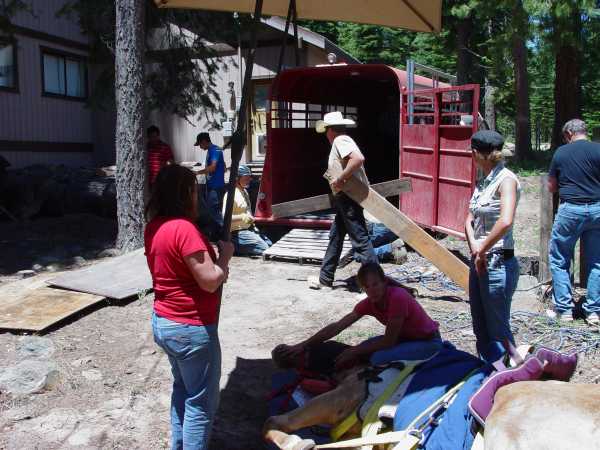
The next image is a critical safety image. If you study the image you can see dirt and gravel flying in the vicinity of Hollywood's hooves. Even while sedated these horses can have lightning fast violent spasm-like reactions with their legs and hooves. The reaction shown here was instant and lasted only about three-quarters of a second, but it would have knocked over anyone standing nearby and possibly broken an ankle or two.
A violent leg reaction while waiting for the ramp to be ready.
This kind of event happened a few times over the course of the rescue.
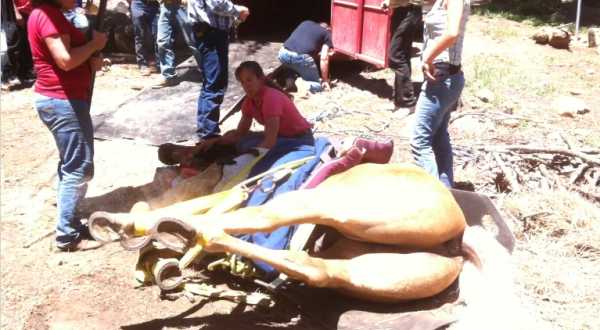
Placing plastic "glide sheets" on the ramp to reduce friction.
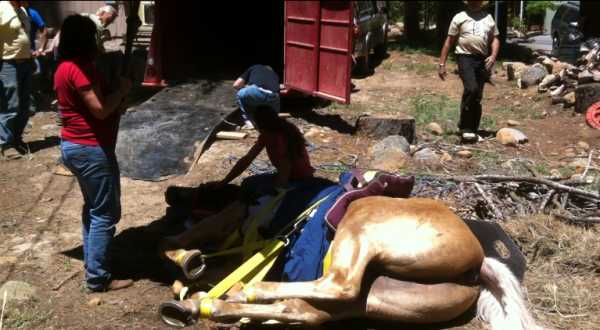
Dragging the horse inside using the Z-rig.
Note the haulers are on the "back" side of the horse.
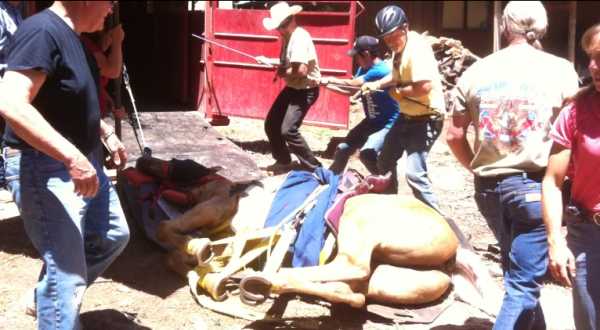
Once the horse was at "floor level," the Z-rig could be attached
more closely to the anchor points in order to complete the loading of the horse.
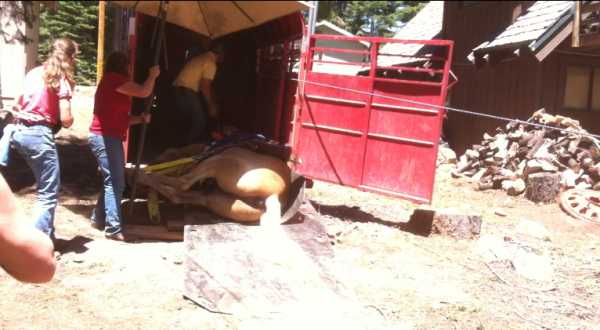
Final positioning in the trailer.
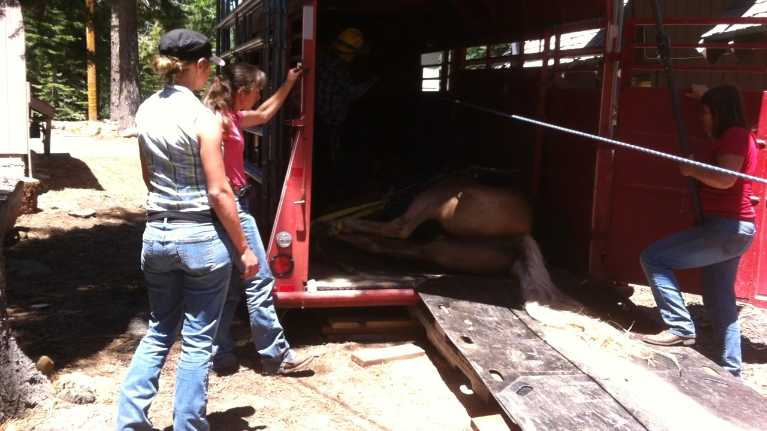
The closest California veterinary facility with a large animal hoist was Large Animal Veterinary Services in Chilcoot, CA. Getting there involved a very long transport however Hollywood made the trip successfully.
Unloading at the veterinary facility.
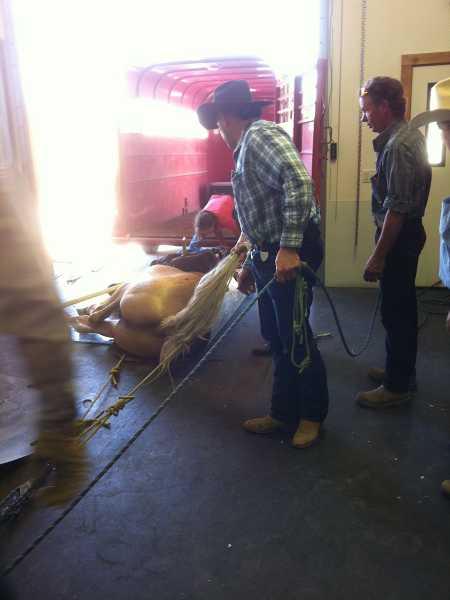
Moving Hollywood into the "hoist room."
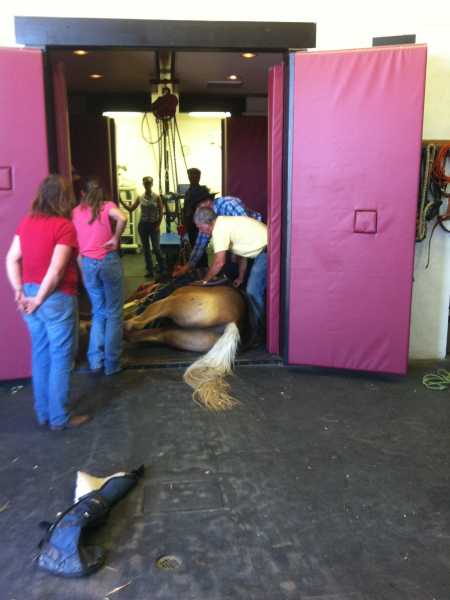
Horse positioned on recumbent pads.
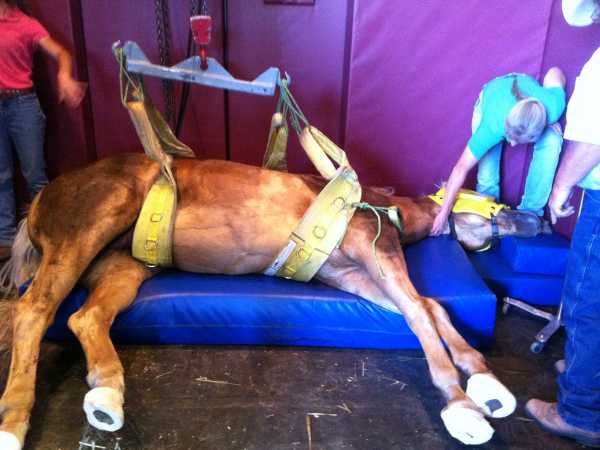
Preliminary diagnosis was that Hollywood was suffering from West Nile Virus, even though he had been vaccinated. Blood work results were negative for West Nile Virus so it was presumed that Hollywood suffered from some other major neurological event. Unfortunately over the next couple of days the horse did not exhibit signs of improvement and had to be euthanized.
Nonetheless, a number of procedural and safety issues can be gleaned from the video of this incident, including issues presented when responders are outnumbered by spontaneous volunteers.
View a video of the rescue operation.
| 











